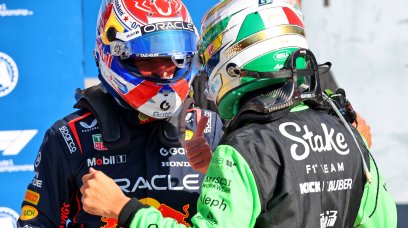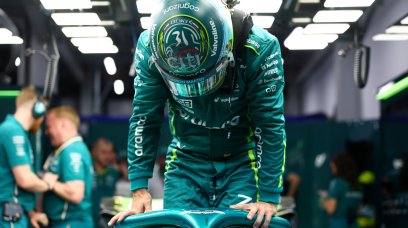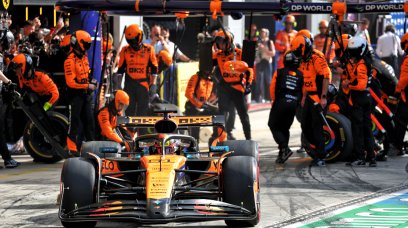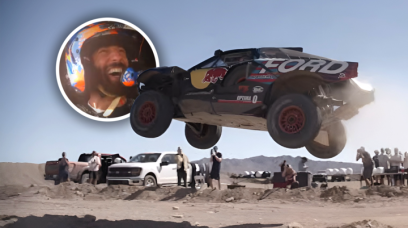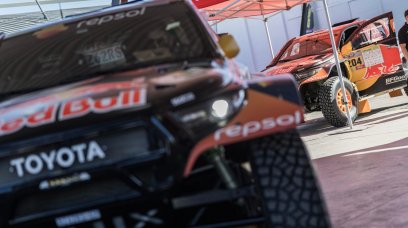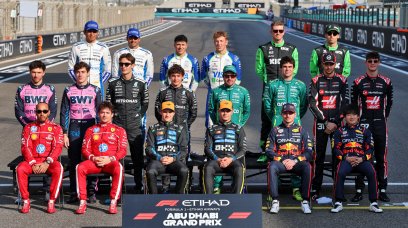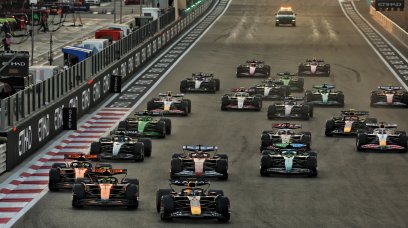After a pandemic-induced delay of 12 months, 2022 saw the long-awaited arrival of a brand new set of F1 technical regulations aimed at making the racing more exciting. The new rules include tighter limits on bodywork, a move from 13-inch to 18-inch tyres, and the reintroduction of ground effect as a means of generating downforce. This ensured that teams have had little to no carryover from their 2021 cars, forcing designers to start with a blank sheet of paper in penning their 2022 mounts. So what were the biggest challenges in designing a car to conform to the new regulations? "The very basic and obvious answer is the aerodynamics – it was a completely new concept," AlphaTauri Technical Director Jody Egginton told RacingNews365.com in an exclusive interview. "We're starting from scratch, so there was a lot of new technologies that we were not familiar with, like the floor and the Venturi [tunnels underneath the car]. "[Another] big discussion point was making sure we could get the car under the weight limit, which has been fantastically challenging for all teams, I'm sure. "The safety and crash tests are more challenging as well now, and you have to pass the test in order to homologate the car to test and race, but equally, in combination with wanting to package the car as tightly as possible and keep the thing at the minimum weight limit, it's a big challenge. "But the aero concept was the first [time we thought] we've really got to look at this, and you're on such a steep learning curve even now, at the beginning of the development cycle, so I'd say car packaging and the aerodynamic concept was the big area of learning."
Getting a handle on porpoising
With the 2022 cars looking very different from their predecessors, it is perhaps unsurprising that they should also handle and behave in vastly different ways. One of the most noticeable features of the new cars is the way they tend to porpoise up and down at high speed. Some teams appear to suffer with this more than others, though Egginton said AlphaTauri are managing to contain the issue, adding that it may be prevalent at some circuits more than others. "We've experienced it on and off," said Egginton. "It's hard to say exactly where the [other] teams are, but we can make our car do it, and then every time we do that, we get a better understanding of it. "We're managing to work around it now and can control it, but there will likely be circuit-specific aspects of it – just because you've got it fully under control at [one] circuit, it doesn't mean it won't come in at [another]." While there are many variables that have an effect on the severity of the porpoising, Egginton noted two particular areas that have a particularly big part to play. "In very general terms, there's ride height sensitivity and stiffness sensitivity, so the combination of those two gives you tools to sort of manage it," said Egginton. "But at the same time, there's an attractiveness to get the floor into the ride height zone where there's the most performance, so you don't want to be too compromised. You want to be on the edge of it, but you don't want to overstep the mark. "Then you've got to consider that across low fuel, high fuel, DRS on, DRS off. There's a lot of things to consider. "But the idea is to maximise the aero package as much as you can around what you've got, and at the same time, try to develop in a direction that minimises the chance of having [porpoising]."
Porpoising "a challenge to simulate"
Egginton also explained why porpoising is difficult for teams to accurately simulate in a wind tunnel. "It's challenging to simulate it fully [in a wind tunnel], because it happens at very low ride heights," said Egginton. "If you're not diligent in the wind tunnel, you could have your floor crash into the wind tunnel belt, so it's difficult to simulate. "You can simulate it in [computational fluid dynamics] to some extent, but there's lots of variables, and the CFD cases will be quite complex, including the influence of road or circuit roughness, and then you have to correlate it. "We had a view that there was a risk that at certain ride heights it would become a problem. When it happened, we were not totally surprised. "You're building your database of understanding what's influencing it, how the geometry changes on your floor affect your aero performance, how the stiffness of your floor reacts, and then you get to the end and you build up a lot of data. But I don't think you get all of that just from a simulation."
Minding the cap
Another hurdle to overcome this year is the move to a budget cap of $140 million per year (down from $145 million), meaning teams have to be especially vigilant about how and where they spend their money. "Obviously, you want to spend the money wisely when there's a new set of regulations; there's more unknowns, so you've got to be focused on that," said Egginton. "We also had to plan very early on what our likely upgrade strategy would be, so you've got to plan forward, you've got to get the money to go as far as it needs to go. "For us as a team, the budget cap figures are not so different to what we've been running at, but everything's new this year. "We're really focused on making sure the money is spent on the bits of the car that are performance differentiators, and we're not throwing money at widgets. "We always kept an eye on it, because we were never in a situation where the budget was without end, but we're really focused on it now. "The main policy is to keep money available for updates. With the new car design, if you find something really performant, you want it on the car, and you need the cash to do it. "So [you need to] keep the money available for as long as possible, and make sure that you don't waste it [or] have any left at the end."
A great diversity of car designs
Many within F1 thought that the restrictive nature of the 2022 regulations would result in a field of virtually identical-looking cars. In reality, however, there has been a considerable diversity of design throughout the pit lane, with Mercedes' uniquely-tapered sidepods setting tongues wagging when they broke cover during pre-season testing. "I'm pretty sure that most teams will have tried things similar to what they're seeing on other teams," said Egginton. "Probably not as extreme as [Mercedes' sidepods], but I think there's aspects of what they've done there which people would likely have looked at. "But if anyone else had put the identical concept in, then I'd have been wondering whether there was something going on! "I can see common strands in a lot of what people have done, but everyone's clearly put together what they believe is the fastest car, and [the designs] are quite diverse. "There are some constraints on what you can do [with] the chassis, but beyond that, there's plenty of freedom, and people are still investing a huge amount of time in packaging and cooling systems."
No perfect solution on the F1 grid yet
F1 history is littered with examples of technical innovations that have swiftly been imitated by other teams, and Egginton feels this trend will continue into 2022 as teams become more accustomed to the new regulations. "There'll be convergence, there always is," said Egginton. "The question is what combination of approach is the optimum solution. Is it any singular team [that has the best solution], or is it a combination [of teams]? Teams will have other solutions in the background, but maybe they're not mature enough yet. "I don't think any single team's solution is the ultimate solution, but it's early days."
Most read

